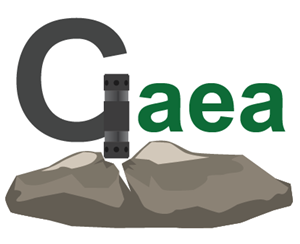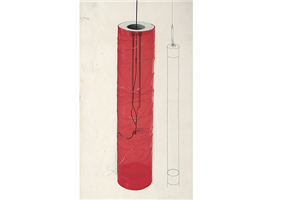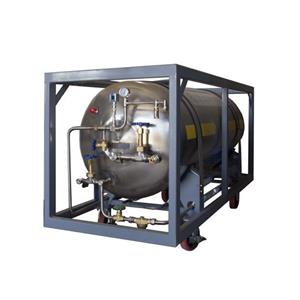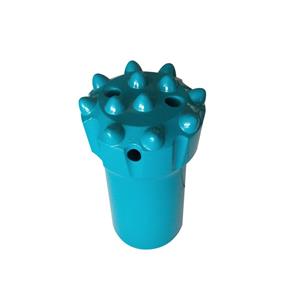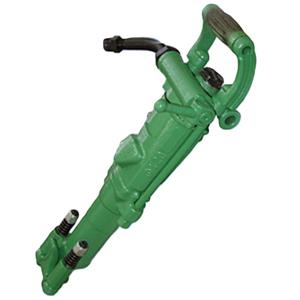How much do you know about tunnel construction safety management?
Tunnel excavation and support operations are the core links of underground engineering structural stability and construction safety. Accurately and properly handling the key links of tunnel construction safety management is of great and irreplaceable significance to ensure the smooth progress of the project and effectively protect the lives of personnel.
Question 1
What are the requirements for tunnel side and back slope excavation and protection?
① Before excavating the tunnel entrance, the circular cut and drainage ditch should be completed first.
② The tunnel entrance should be excavated from top to bottom in layers, and protected in layers. Bottom excavation or overlapping excavation is not allowed; shallow hole controlled weak blasting is used for stone.
③ Before entering the tunnel, the tunnel entrance anti-sliding piles, prestressed anchor cables, protective nets and other projects related to the stability of the tunnel entrance must be completed according to the design requirements.
Question 2
What work reminder signs should be set up for the layout of the tunnel entrance?
Mainly including but not limited to the instructions for entering the tunnel, the tunnel geological longitudinal section map, five signs and one map, the public notice board of major hazard sources, the daily dangerous operation notice board, the safety sign board, etc.
Question 3
The tunnel entrance must be equipped with a dispatching and command center, intelligent vehicle access control, and personnel real-name system. What are the specific requirements?
The tunnel entrance must be equipped with a dispatching and command center, intelligent vehicle access control, and personnel real-name access control system, and a dedicated person must be on duty to "manage the real-name system" for people entering and leaving. The tunnel entrance must be equipped with an electronic display screen to display the status of people in the tunnel in real time. Gas tunnels must carry out toxic and harmful gas monitoring, set up a gas automatic monitoring system at the tunnel entrance, set up a safety checkpoint for people entering the tunnel, and strictly prohibit carrying fire, battery power, and wearing static electricity-prone clothing into the gas work area.
Question 4
How to set up the tunnel ventilator?
The ventilator should preferably use an energy-saving variable frequency fan, which is ≮30m away from the tunnel entrance, and an iron grate is set at the air inlet. The ventilator platform bracket is painted with reflective paint or pasted with a reflective cursor, and a speed limit, height limit, and width limit sign is hung above it. When there are toxic and harmful gases in the tunnel, a spare fan position must be reserved. Cast a 0.3m high anti-collision platform around the fan positioning frame, and paint the outer side of the anti-collision platform with yellow and black paint at a spacing of 10cm.
Question 5
How to set up the tunnel air compressor?
The air compressor room is set up according to the temporary construction plan, with equipment spacing ≮1m, and numbered in a "straight line". Safety operating procedures are posted on each equipment, and maintenance records are hung. Each gas storage tank must hang a special equipment registration certificate, and the safety accessories must be checked according to regulations during use.
Question 6
What are the key points to pay attention to when setting up a substation for tunnel construction?
The substation should be equipped with lightning protection and wind protection devices. When the power line of the substation needs to cross the construction area, the minimum height of its lowest point from the sidewalk and transportation line should meet the safety distance requirements.
Question 7
What are the requirements for setting up a temporary mechanical equipment storage shed at the tunnel entrance?
The temporary mechanical equipment storage and maintenance area at the tunnel entrance is equipped with a rainproof shed, which adopts a color steel tile arched roof, a white bottom and a blue top, and a column height of ≮4.5m (depending on the highest size of the equipment). Transport vehicles and mechanical equipment should be parked in a classified, orderly manner and not randomly parked.
Question 8
What are the requirements for setting up emergency rescue material rooms at the tunnel entrance?
Emergency rescue material rooms should be set up at appropriate locations at the tunnel entrance. The houses should be mobile board houses without front walls, and the front should be closed with 1.2m high stainless steel movable fences. A signboard of "Emergency Material Area" should be set up on the railing, and the color should be consistent with the propaganda board at the tunnel entrance. Emergency material warehouses should be set up at appropriate locations in the tunnel entrance and long tunnels, and emergency material cabinets should be set up within 20m of the secondary lining trolley and the face. Tunnels with the risk of sudden mud and water must be equipped with common life-saving equipment such as life jackets and lifebuoys. Emergency materials should be determined according to the conditions of the construction site to ensure that the accounts and materials are consistent. Micro fire stations, fire pools, and sand pools should be set up at the tunnel entrance, equipped with shovels, iron buckets and dry powder fire extinguishers.
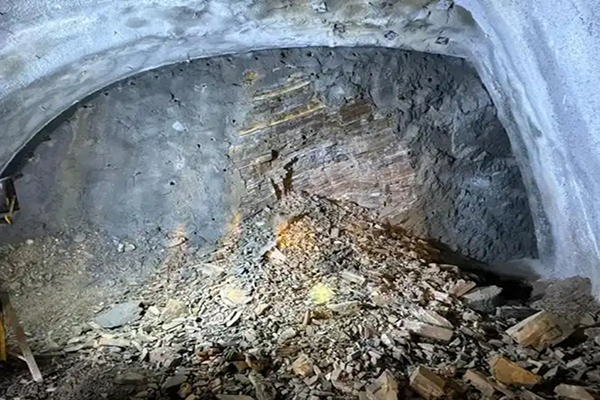
Question 9
What are the requirements for tunnel sewage treatment?
A plan must be prepared for sewage treatment, and all external drainage bodies should be tested and discharged after meeting the standards. The entrance of the cave is designed to set up a sewage sedimentation tank, and the sedimentation tank must be set up as a three-level sedimentation tank + oil treatment tank. The sedimentation tank is surrounded by railings (height ≮1.2m), with a cover on top, and silt is often cleared to keep the drainage unobstructed.
Question 10
What are the technical requirements for the use of concentrated energy blasting in drilling and blasting operations?
Use concentrated energy blasting technology to achieve smooth blasting or controlled blasting, and equip a three-dimensional laser scanner to analyze the cross-section, dynamically adjust the blasting parameters, and avoid under-excavation and over-excavation. Wet drilling should be used for drilling operations, and the construction should be strictly in accordance with the drilling and blasting design.
Question 11
How to manage the blasting operation process?
① After the blasting equipment is transported to the site, it must be supervised by a dedicated person. The interval between detonators and explosives is ≮25m. A warning area is set up around it, and a "No Fireworks" warning sign is set up.
② Loading workers should wear anti-static clothing and use special blasting sticks. Unrelated personnel and machinery should be evacuated to a safe place; drilling and charging operations are strictly prohibited in parallel.
③ After the charging is completed, the site should be cleaned up in time, the number of civilian explosives should be counted, and the remaining explosives and detonators should be returned to the warehouse by the personnel who received the explosives and detonators.
④ When excavating non-long tunnels, the detonation station should be set up 50m away from the side of the tunnel entrance; when a detonation station is set up in a car shelter in a long tunnel, the detonation station is ≮300m away from the blasting position.
⑤ Before detonation, the command, warning, and detonation personnel should be determined, and unified command should be given, and a cordon should be set up. When the distance between the opposite faces is less than 3 times the tunnel diameter (or less than 15m), one of the working faces must stop working, and hard isolation protection and warning signs should be set up outside the safety distance; the front and rear safety distances of small clearance tunnels in the same direction must meet the design requirements; in dangerous sections of tunnels with coal or gas outbursts, the distance between the opposite faces shall not be less than 100m, and the same direction shall not be less than 50m.
⑥ After blasting, ventilation must be carried out for more than 15 minutes before two personnel are allowed to enter the blasting site for inspection. If blind shots or suspected blind shots or other residual blasting equipment are found, they should be properly handled.
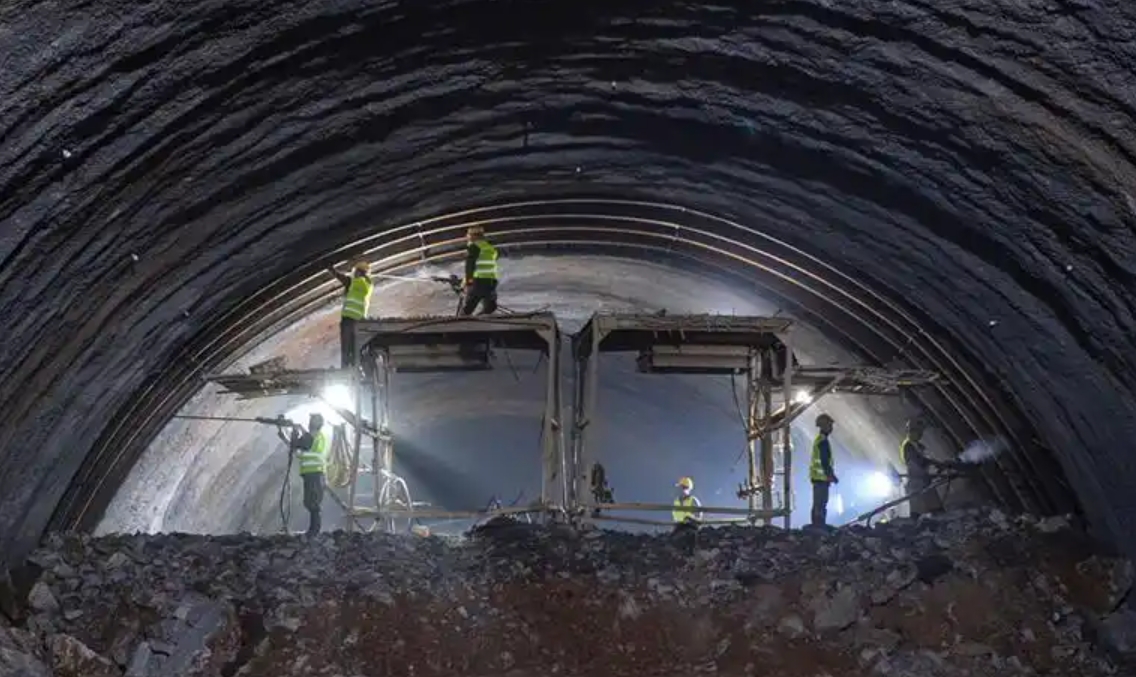
Question 12
What are the requirements for setting up edge protection for excavation steps?
When the tunnel is excavated using the step method, edge protection should be done between the upper and lower (middle) steps. Guardrails or reflective cones can be set up for protection and warning. The tunnel face is constructed using the step method, and up and down ladders with safety handrails can be set between the steps.
Question 13
How to clean sewage in the tunnel?
The clean and dirty water in the tunnel strictly follows the requirements of clean and dirty water diversion, implements clean and dirty water diversion measures, and improves clean and dirty water pipes, drainage ditches, fixed pump stations, mobile water tanks and other facilities in the tunnel; clean water is led to the clean water sedimentation tank outside the tunnel through the drainage pipe, and discharged into the surface water body after the sedimentation water quality test is qualified. The sewage of the slope tunnel is collected and pumped to the five-level sedimentation tank outside the tunnel through the centralized collection box of the face, and discharged to the sewage treatment station at the entrance of the tunnel after sedimentation and filtration in the sedimentation tank. After treatment at the sewage treatment station, it is discharged to the natural water body after meeting the standards.
① The face to the arch (bottom plate) is initially supported by clean water, and the scattered water is collected and drained through the waterproof board, and the stranded water is drained to the PVC clean water pipes on both sides or the semicircular drainage trough to the clean water collection box through the blind pipe.
② The face sewage is collected and pumped to the five-level sedimentation tank at the entrance of the tunnel through the sewage collection box, and discharged to the sewage treatment station for centralized treatment after sedimentation and filtration. It can be discharged into the river or branch ditch of Class III water quality standard only after the treatment meets the standards (PH=6-9, SS≤70mg/L).
Question 14
How to clean the sewage in the tunnel arch?
A sewage collection box is set at the end of the tunnel arch. The sewage is pumped to the sewage ditches on both sides of the low side wall by a water pump, and then discharged to the five-level sedimentation tank at the entrance. After being treated at the sewage treatment station and meeting the standards, it is discharged. The clean water in the tunnel is discharged to the central deep buried ditch through the longitudinal blind pipe at the bottom of the tunnel, and then discharged to the natural river through the drainage culvert. The primary branch seepage of the second lining forming section is collected through the PVC pipe of the low side wall drainage hole to achieve the effect of clean and dirty water diversion. The clean and dirty water of the reverse slope drainage tunnel is pumped to the tunnel entrance sewage treatment station and the tunnel entrance clean water sedimentation tank by graded relay through the clean and dirty water pump station. The sewage is treated at the sewage treatment station and discharged after meeting the standards. The clean water is precipitated in the tunnel entrance clean water sedimentation tank and then adjusted after adding drugs and discharged after meeting the standards. The treatment meets the standards (PH=6-9, SS≤70mg/L).
Question 15
What are the safety measures after the rail-mounted and wheeled steel waterproof board operation trolley is in place?
After the rail-type and wheel-type steel waterproof board operation trolley is in place, an anti-slip device must be installed, and the hydraulic support should have a locking device.
Question 16
What is the lighting power supply voltage requirement for the waterproof board trolley, lining trolley, work platform and other working areas in the tunnel?
The lighting power supply voltage for the waterproof board trolley, lining trolley, work platform and other working areas in the tunnel should not be greater than 36V. (① The lighting power supply voltage in humid and easily accessible places with charged bodies shall not be greater than 24V. ② In particularly humid places, on well-conductive ground, or in metal containers, the power supply voltage shall not be greater than 12V. ③ The lighting power supply voltage of mobile lighting devices (such as running lights) shall not be greater than 36V). The distance between the lighting fixtures on the waterproof board working surface and the waterproof board shall not be less than 50cm.
Question 17
How to set up temporary power supply in areas such as waterproof board trolleys and lining trolleys?
Temporary power supply in areas such as waterproof board trolleys and lining trolleys uses a modular integrated power distribution system, adopts angle steel processing brackets, and sets a secondary distribution box to connect multiple switch boxes. The frame size is 50cm high, the scaffolding is 100cm high, 150cm long, 50cm wide, and made of 5×5cm angle steel. The ceiling is protected by steel plates, and a set of fire extinguishers is hung to prevent water from dripping into the distribution box. (The number of distribution boxes and the frame size can be adjusted according to the actual situation on site). At least one set of fire extinguishers is configured on each side of each layer of the secondary lining, steel bars (hanging cloth), and maintenance trolley; at least one set of fire extinguishers should be separately equipped in the distribution box, special caverns, etc. The storage rack should be made uniformly in the place where the foundation of the fire extinguisher is unstable, and the size is 40*40cm (adjustable according to the actual situation).
Question 18
What notice board should be hung on the hanging cloth trolley?
The notice board for supervision of hot work is hung on the hanging cloth trolley, and the size of the signboard is 40*60cm. The hanging cloth trolley and the secondary lining trolley must be equipped with fire blankets or fireproof boards for hot work, which should be set on flammable items.
Question 19
What are the requirements for the trolley protection setting?
Trolley: Ladder and edge protection adopts fixed guardrails, and angle guardrails are used to close when passing through various platforms. The guardrails are welded with steel pipes and painted yellow; the protection height of the trolley platform and trestle is 1.2m, and the protection height of the ladder is 60cm; the edge protection of the trolley platform is installed with a skirting board of not less than 200mm, painted with black and yellow reflective paint; the main outline steel structure of the trolley is equipped with a red safety clearance light and a warning sign.
Question 20
What are the emergency measures for the safety of the second lining of the tunnel?
① Sound and light alarm and emergency shouting: sound and light alarm and shouting equipment are set on the lining trolley, and they are connected in series with the alarms at the face and the entrance. The button installation height should be convenient for use. Sound and light alarms and emergency shouting systems in the same area should be set at the same place. Gas tunnels use coal mine explosion-proof type.
② The concentrated area of the second lining trolley operation in the tunnel is equipped with no less than the on-duty operators and no less than 10 self-rescue respirators, which should be marked and easy to use.
③Secondary lining trolleys, maintenance trolleys, etc. are equipped with safety warning signs and safe operating procedures. The contents of the operating procedures must be operational. The sign size is 60*80cm. The height of the warning sign is 60cm, and the width is set according to each sign not less than 30cm wide.
